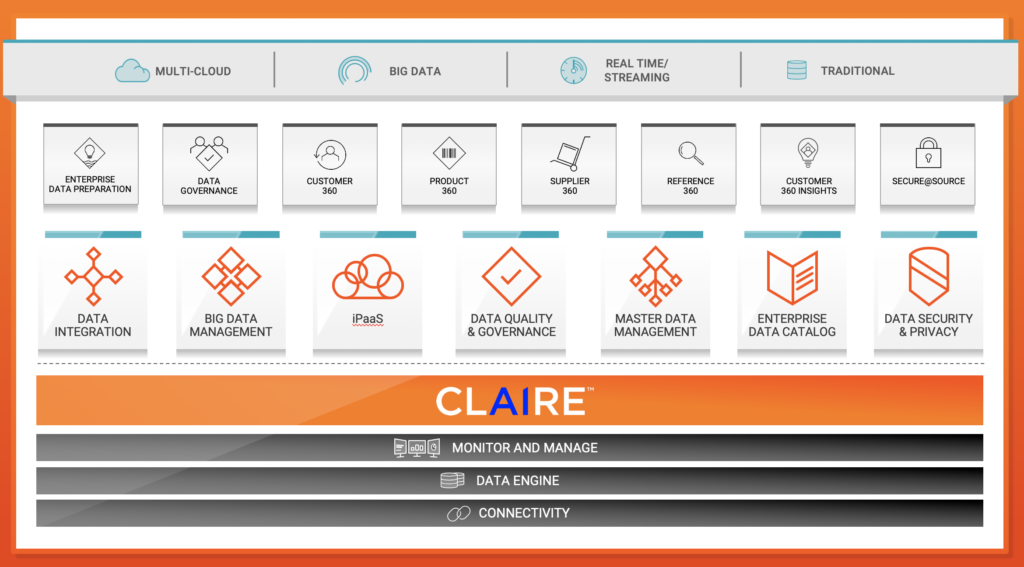Top 10 Principles of an Intelligent Data Platform

As someone with many years of experience in product development, I can tell you it makes a difference when you have an overall vision to guide you. A few years ago, we introduced the Intelligent Data Platform (IDP), the industry’s most complete, modular, microservices-based architecture for data management. The idea is that you can evolve at your own pace, tackle your most pressing data challenges according to your own priorities, and be assured that wherever you start, there’s a framework that will help you achieve your data-driven digital transformation goals.

The platform is part of everything we do and is the foundation for all our solutions. It’s an example of how we support a holistic, System Thinking approach to enterprise data management. Let me take you behind the scenes of Informatica engineering and introduce you to the 10 guiding principles behind our Intelligent Data Platform.
- We are design-led. We believe in delivering the right user experience for the right user in the right context. For example, citizen integrators, data stewards, data analysts, data engineers, etc.
- We design code-less solutions. Our customers should not have to resort to hand-coding. Building data solutions should be as easy as and fun as connecting Lego blocks.
- We leverage AI algorithms to help customers with design-time agility, runtime performance, and operational efficiency. For example: A* and NLP for data structure inference and entity extraction, Jaccard distance for column similarity, and BIRCH techniques to identify user behavior.
- An intelligent data catalog is the rendezvous point for all metadata. Comprehensive metadata management (i.e., connectivity, integration, quality, mastering, and security) is essential for optimizing all data management capabilities.
- We leverage microservices and APIs to build flexible, scalable and integrate-able services
- We are open source friendly and don’t have “Not Invented Here” (NIH) syndrome. We adopt and optimize open source to provide the best solutions to customers. Some examples are: Spark, Kafka, Docker containers, Kubernetes, Solr, and machine learning algorithms.
- We optimize for various runtime environments (multi-cloud, on-premises, and hybrid) to give customers a choice.
- We build solutions that are multi-cloud ready. We not only provide cloud connectivity but also bring our platform to where the customer’s data is. IDP runs on the major cloud platform providers such as Azure, AWS, and GCP.
- We believe in a true Integration Platform as a Service (iPaaS) that is comprehensive and supports all types of data, all users, and all patterns. For example, with a next-generation iPaaS, you can have a design environment in the cloud and runtime execution as a managed hosted service.
- Security and privacy are “built-in” design principles for development, testing and hosting of cloud offerings.
We follow these principles in each stage of product development for all products: in user experience design, during development or testing, while hosting cloud solutions. IDP is one of five pillars in a System Thinking-led approach to data management. Look for more blog posts in this series exploring the other pillars.








